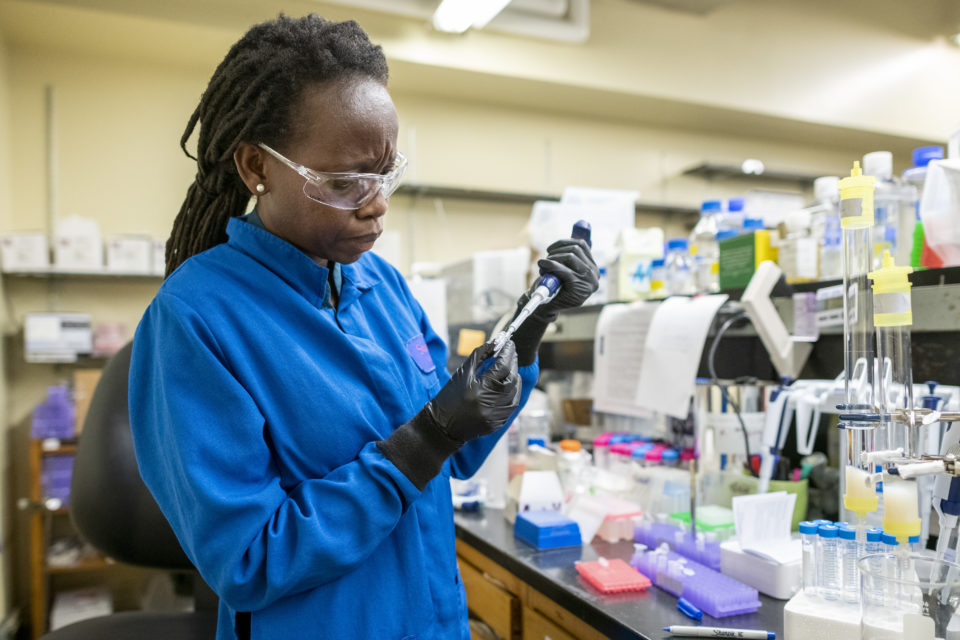In the third in a series on what the lives of Stanford researchers actually look like, chemists Noah Burns, Laura Dassama, Michael Fayer and Hemamala Karunadasa talk about their paths into the field, the joys of making new molecules and the way in which “the central science” pervades our lives.
BY NATHAN COLLINS
Michael Fayer surveys the world around him and sees something that most of us do not: chemistry. It’s not that Fayer, a professor of chemistry, sees no value in anything but academic chemistry research. It’s just that when it comes down to it, chemistry has more to do with ordinary human experience than any other field. To Fayer, everything from color to nutrition to the greenhouse effect is, first and foremost, chemistry.
What it’s like…
Physics is a social endeavor. There’s beauty in neuroscience. Chemistry is all about building things – and it’s all hard work. Find out more about what it’s like to be a researcher at Stanford.
- What it’s like to be a chemist
- What it’s like to be a neuroscientist
- What it’s like to be a theoretical physicist
“Chemistry just permeates our lives,” he said.
He is not alone in this view. For Noah Burns, it is the basis of life. For Laura Dassama, it is the path to advances in health. And for Hemamala Karunadasa, chemistry is the foundation of civilizations. Chemists call their discipline “the central science” for a reason, because it touches everything in our daily lives. Here, Fayer, Burns, Dassama and Karunadasa share how they got into chemistry, the joys and frustrations of their academic lives and what chemistry, the central science, means to them.
Fayer is the David Mulvane Ehrsam and Edward Curtis Franklin Professor in Chemistry. Burns is an assistant professor of chemistry and a member of Stanford ChEM-H. Dassama is an assistant professor of chemistry and an Institute Scholar of ChEM-H. Karunadasa is an assistant professor of chemistry and a Center Fellow of the Precourt Institute for Energy.
Photographs by L.A. Cicero

